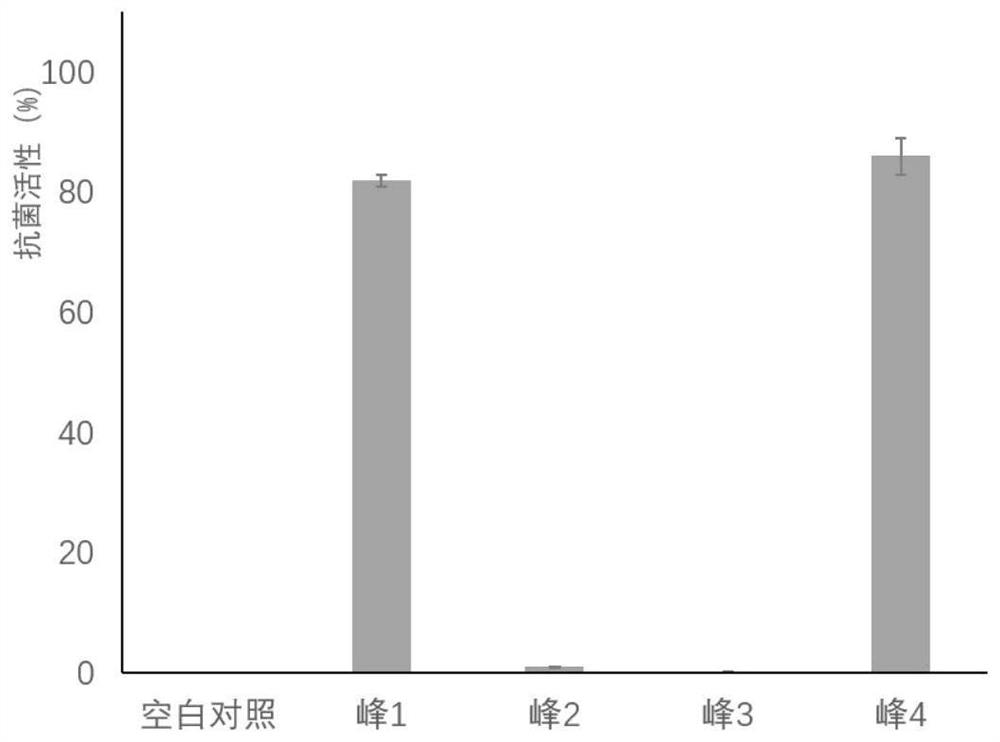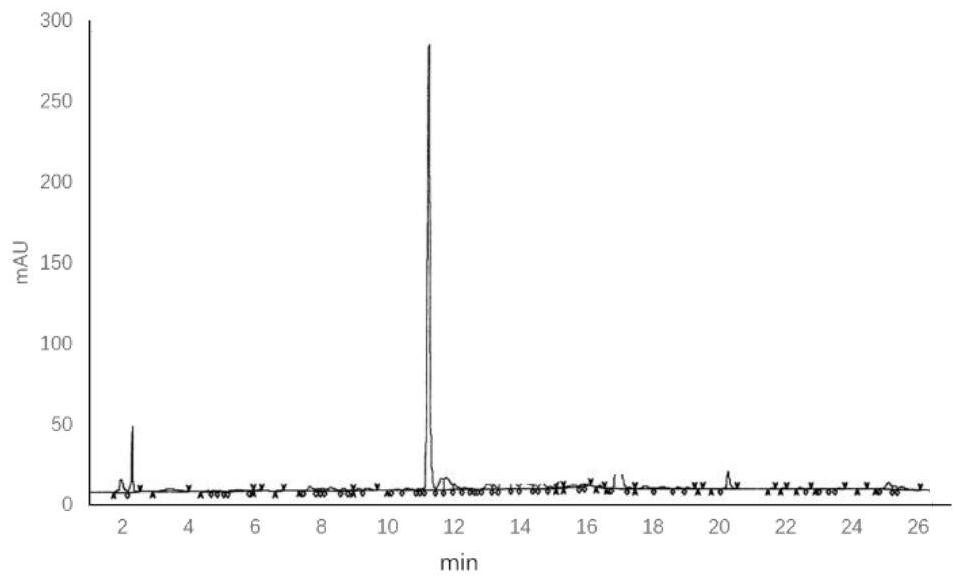Application of antibacterial peptide to preparation of medicines or cosmetics
An antibacterial peptide and cosmetic technology, applied in the field of antibacterial peptides in the preparation of drugs or cosmetics, can solve the problems of no research, no screening and acquisition of antibacterial peptides, etc., and achieve the effect of significant inhibitory activity and low toxicity
- Summary
- Abstract
- Description
- Claims
- Application Information
AI Technical Summary
Problems solved by technology
Method used
Image
Examples
Embodiment 1
[0023] Example 1 Screening of anti-trichophyton rubrum bactericidal peptide
[0024] 1. Bacteria culture
[0025] Trichophyton rubrum The 28188 standard strain was planted on a Sabouraud dextrose agar SDA plate, cultured in the dark at 27°C, picked a single colony and put it into a shaker flask of 250mL PDA medium, 150r / min, 27°C dark culture, then 3000r / min, 4°C , centrifuged for 10 min, and the cells were collected to harvest the cells for later use.
[0026] 2. Lipid extraction
[0027] 8 g of the collected bacterial cells were washed and centrifuged repeatedly with PBS, resuspended in 60 mL Tris-HCl buffer (25 mmol / L, pH 7.5), ultrasonically broken, and after centrifugation, 180 mL of chloroform-methanol (1:2, v / v) mixed solvents, mixed and stirred for 100min. Afterwards, 40 mL of chloroform and 40 mL of distilled water were added, and stirring was continued for 30 min. The chloroform phase was separated with a separatory funnel, and the solvent was removed by rotar...
Embodiment 2
[0037] The mensuration of embodiment 2 antimicrobial peptide minimum inhibitory concentration
[0038] The minimum inhibitory concentrations (Minimalinhibitoryconcentrations, MICs) of antimicrobial peptides against indicator bacteria were determined by microdilution method.
[0039] The strains tested were: (1) Escherichia coli ATCC25922; (2) Trichophyton mentagrophytes, Beijing Huayueyang Biotech NRR00060; (3) Trichophyton rubrum 28188. The strains were cultured according to conventional culture methods. After culturing to the logarithmic phase, collect the bacterial cells in the logarithmic phase by centrifugation (3000r / min, 4°C, 10min), wash with sterilized PBS, and resuspend until the OD600 is about 0.3. The peptide was prepared into a 1024 μg / mL stock solution with sterilized PBS, sterilized by filtration with a 0.22 μm filter membrane, and serially diluted with sterilized PBS. Add 100 μL medium, 100 μL test bacteria solution and 50 μL antimicrobial peptide solutions...
Embodiment 3
[0043] The influence of embodiment 3 antimicrobial peptides on the expression of NADPH oxidase
[0044] The 8 μg / mL and 32 μg / mL treated bacteria in Example 2 were collected and soaked in liquid nitrogen to prevent the degradation of RNA, and the samples were ground into as fine a powder as possible using a mortar, grinding rod and liquid nitrogen. Transfer the sample to a 1.5ml pre-cooled centrifuge tube, extract and purify fungal RNA according to the instructions of HiPure Fungal RNA Kit and DNase On Column Kit, and prepare cDNA by reverse transcription. Using primers: select the tubulin of Trichophyton rubrum as internal reference gene F: 5'-CCGCTCTTTGCTCTATTCCT-3, R: 5'-CCATCTCGTCCATACCCTCA-3,) use NADPH oxidase (Nox) gene F: 5'-TGGCTGTGACTTTGACGAGA-3'; R: 5'-CCGACTAACACCGCTACTTC-3' primer for qRT-PCR amplification. The result is as image 3 As shown, compared with the control group, the expression of Nox gene in the antimicrobial peptide treatment group was significantl...
PUM
| Property | Measurement | Unit |
|---|---|---|
| molecular weight | aaaaa | aaaaa |
| particle diameter | aaaaa | aaaaa |
| collision energy | aaaaa | aaaaa |
Abstract
Description
Claims
Application Information
 Login to View More
Login to View More - R&D
- Intellectual Property
- Life Sciences
- Materials
- Tech Scout
- Unparalleled Data Quality
- Higher Quality Content
- 60% Fewer Hallucinations
Browse by: Latest US Patents, China's latest patents, Technical Efficacy Thesaurus, Application Domain, Technology Topic, Popular Technical Reports.
© 2025 PatSnap. All rights reserved.Legal|Privacy policy|Modern Slavery Act Transparency Statement|Sitemap|About US| Contact US: help@patsnap.com



